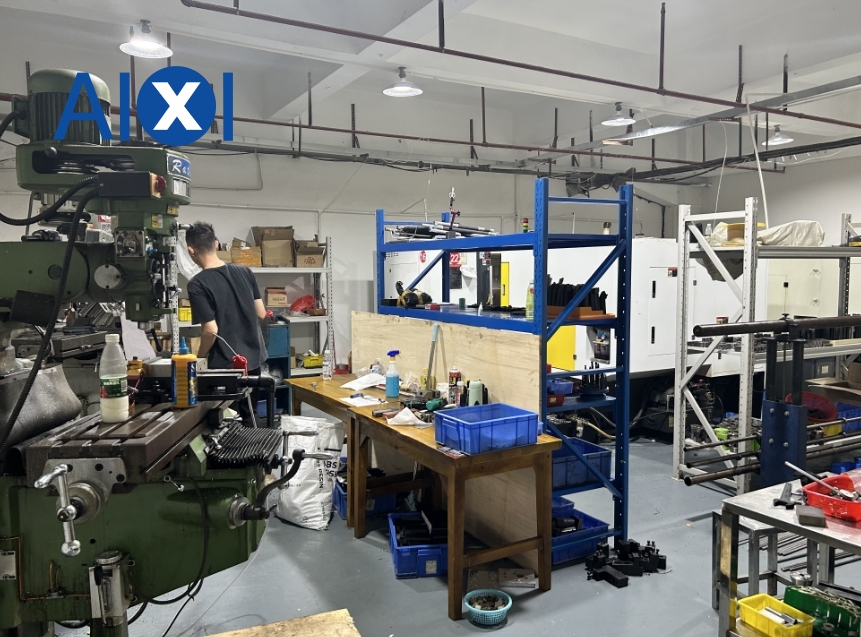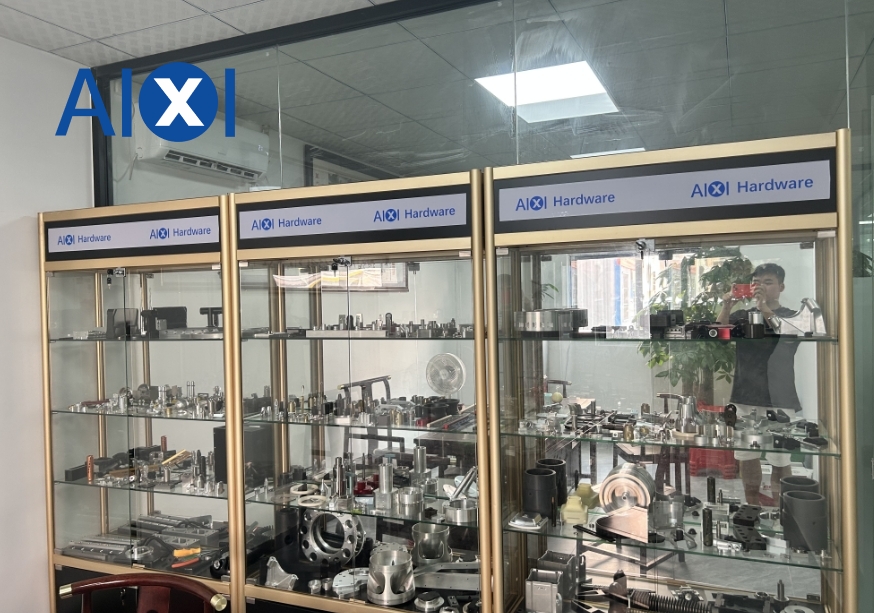1. Introduction
1.1 Overview of Precision CNC Machining
Precision CNC machining is at the vanguard of contemporary production, transforming sectors with unmatched efficiency and accuracy. This state-of-the-art technology uses computer-controlled machinery to create complex parts with amazing accuracy, propelling breakthroughs across several industries. Precision CNC machining is essential to improving performance, quality, and innovation in the automobile sector. Its uses are numerous and invaluable, ranging from interior decoration to engine components. This thorough reference explores the value of precise CNC machining in the automobile industry, highlighting its advantages, uses, innovations in technology, and practical case studies. Through comprehending its crucial function in molding the automobile terrain, we may recognize the revolutionary potential of precision engineering in propelling advancement and creativity.
In this report, the significance of precision CNC machining in the automotive sector is examined, along with its applications, technological developments in the field, case studies, and examples of successful implementation. We aim to give a thorough overview of this vital technology that will shape tomorrow’s cars by exploring important applications, difficulties, and emerging trends.
2. Importance of Precision CNC Machining in the Automobile Industry
Precision CNC machining is providing lots of benefits that enhance efficiency, improve quality, offer cost-effectiveness, and enable innovation and customization. These benefits highlight how crucial precise CNC machining is to the automotive manufacturing process.
2.1 Enhanced Efficiency
One of the main benefits of precise CNC machining in the automotive sector is enhanced efficiency. Faster production cycles and shorter lead times are achieved by using Computer Numerical Control (CNC) equipment, which enable accurate and automated control of machining operations. Because of their enhanced efficiency, automakers are better able to satisfy demand and optimize their production processes.
2.2 Improved Quality
Furthermore, higher quality in the production of automobiles is facilitated by precise CNC machining. When it comes to producing automobile components, CNC machines can achieve incredibly tight tolerances and high levels of precision, which guarantees accuracy and consistency. This eventually improves the dependability and performance of cars by resulting in fewer faults and higher-quality final products.
2.3 Cost-effectiveness
Cost-effectiveness is also another important advantage of precise CNC machining for the automotive sector. The long-term cost reductions on CNC equipment outweigh the potentially large initial expenditure. Minimal manual involvement is required for CNC machines to work, which minimizes material waste and labor expenses. Further enhancing overall cost-effectiveness is the excellent efficiency and quality attained by CNC machining, which reduces warranty and rework costs.
- Innovation and Customization
Moreover, in the car industry, precise CNC machining promotes innovation and customization. Complex and complicated components that would be difficult or impossible to fabricate using conventional methods may now be produced thanks to CNC technology. Because of this adaptability, automakers may experiment with novel design ideas, use cutting-edge materials, and provide specialized solutions to cater to a wide range of consumer requirements and preferences.
3. Application of Precision CNC Machining in the Automobile Industry
3.1 Engine Components
Engine components benefit immensely from CNC machining, which precisely shapes vital components like engine blocks, pistons, and cylinder heads to satisfy exacting performance standards. Complex geometries and exact measurements are possible with CNC machining, which improves engine dependability and efficiency.
3.2 Transmission Systems
In transmission systems, the extraordinary accuracy with which gears, shafts, and other transmission components may be produced is made possible by CNC machining. This contributes to the overall performance and longevity of the vehicle by ensuring smooth power delivery, decreased friction, and increased durability. In order to satisfy the requirements of contemporary automobile engineering, producers may maintain uniformity and quality across batches of transmission parts by employing CNC technology.
3.3 Chassis and Suspension Parts
Chassis and suspension parts endure demanding circumstances, necessitating precision production to guarantee performance and safety. Accurate and precise fabrication of suspension parts, such strut mounts, steering knuckles, and control arms, is made possible by CNC machining. Better handling, stability, and ride comfort follow, all of which are essential for giving customers the best possible driving experience.
3.4 Interior and Exterior Trim
Interior and exterior trim, CNC machining is advantageous for components with complex designs and eye-catching appearances. CNC technology makes it possible to produce intricate features and complicated designs with little room for mistake, from door knobs to dashboard panels. This guarantees that trim parts are seamlessly integrated into the outside and inside of the car, improving its appearance and usefulness.
4. Technological Advancements in Precision CNC Machining
Technological advancements in precision CNC machining has transformed the automotive sector by improving productivity, accuracy, and efficiency. Three significant developments stick out in this context: multi-axis machining, high-speed machining, and adaptive control systems.
4.1 Multi-axis Machining
Multi-axis machining symbolizes a substantial advancement in the field of precision CNC machining technology. In the past, there were only three axes of movement available for machining processes: X, Y, and Z. But thanks to multi-axis machining, producers can now make use of extra rotating axes, making it easier and more precise to create elaborate and complicated shapes. This capacity leads to better performance and design flexibility by making it feasible to create complex automotive components that were previously difficult or impossible to fabricate.
4.2 High-speed Machining
High-speed machining has also changed how the automotive sector uses precision CNC machining. High spindle speeds, sophisticated cutting tools, and well-tuned machining parameters allow manufacturers to achieve much higher machining speeds without sacrificing accuracy or surface polish. In the end, this higher productivity helps manufacturers and customers by resulting in shorter lead times and cheaper manufacturing costs. Furthermore, hardened steels and titanium alloys are difficult materials to machine well, but high-speed machining opens up new options for lightweighting and performance enhancement in vehicle parts.
4.3 Adaptive Control Systems
Adaptive control systems represent yet another important technical development in the field of precision CNC machining. These systems dynamically modify machining settings in response to changing variables, such as tool wear, material characteristics, and environmental influences, by utilizing real-time monitoring and feedback mechanisms. Adaptive control systems reduce tool wear, maximize surface finish quality, and increase process stability by continually improving cutting settings. Higher overall machining consistency and efficiency as a result guarantee that produced parts fulfill the exacting quality requirements needed in the automotive sector.
Furthermore, by enabling the use of sophisticated machining techniques like trochoidal milling and high-efficiency machining, adaptive control systems help to increase productivity and shorten machining times. These technologies also make it easier to incorporate robots and automation into CNC machining operations, which enables lights-out production operations and boosts productivity and efficiency even further.
5. Case Studies: Examples of Successful Implementation
5.1 Company A
Several firms have successfully used precision CNC machining in the automotive sector, demonstrating the effectiveness and significance of this technology. Company A is one example of this type of business, as it effectively incorporated CNC machining into its manufacturing procedures, resulting in notable increases in productivity and quality. Company A was able to produce complex automotive parts with unmatched accuracy by utilizing cutting-edge CNC processes, which improved the end products’ durability and performance. This implementation was successful in maximizing production deadlines and reducing waste, which increased cost-effectiveness.
5.2 Company B
In the same way, Company B is a noteworthy example of how precision CNC machining is used in the automotive industry. Company B transformed its production processes and achieved exceptional levels of accuracy and consistency in the fabrication of crucial automobile parts by strategically implementing CNC technology. With this adoption, Company B was able to easily satisfy customized requirements and meet the strict industry standards. Consequently, the business acquired a competitive advantage that helped it draw in more customers and increase its market share in the fiercely competitive automobile industry. In the end, these case studies highlight how crucial precise CNC machining is to the success and innovation of the automotive sector, raising the bar for effectiveness, dependability, and quality.
Challenges and Future Directions
First of all, the intricacy of today’s car designs necessitates ever-more-complex parts, stretching the bounds of machining capabilities. Furthermore, machining activities are under more strain due to the requirement for quicker turnaround times and economical manufacturing.
Moreover, materials like lightweight metals, composites, and sophisticated alloys are becoming more common as automobile technology advances, creating additional difficulties for tooling and machining. Additionally, ongoing monitoring and machining process adjustment are necessary to guarantee consistency and quality across large-scale production runs.
Looking ahead, developments like automation, artificial intelligence, and sophisticated tooling technologies hold the key to the future of precision CNC machining in the automotive sector. AI-driven solutions offer predictive maintenance and optimization, while automation can increase efficiency and decrease human error. Furthermore, the creation of state-of-the-art tooling materials and methods will enhance machining precision and efficiency even further, guaranteeing that the sector stays at the forefront of innovation and competitiveness.
- Conclusion
In conclusion, precision CNC machining stands as a cornerstone of innovation and advancement in the automotive industry. Its role in enhancing efficiency, quality, and customization is undeniable. Although there are still obstacles to overcome, CNC machining is well-positioned to continue influencing the direction of vehicle manufacture with previously unheard-of accuracy and creativity.

 Deutsch
Deutsch Français
Français 日本語
日本語 Español
Español

